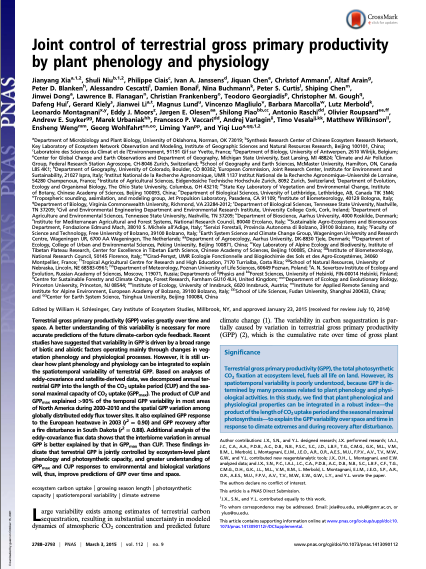
Joint control of terrestrial gross primary productivity by plant phenology and physiology
PNAS, 112: 2788-2793.
Resumen
Terrestrial gross primary productivity (GPP) varies greatly over time and space. A better understanding of this variability is necessary for more accurate predictions of the future climate–carbon cycle feedback. Recent studies have suggested that variability in GPP is driven by a broad range of biotic and abiotic factors operating mainly through changes in veg- etation phenology and physiological processes. However, it is still un- clear how plant phenology and physiology can be integrated to explain the spatiotemporal variability of terrestrial GPP. Based on analyses of eddy–covariance and satellite-derived data, we decomposed annual ter- restrial GPP into the length of the CO2 uptake period (CUP) and the sea- sonal maximal capacity of CO2 uptake (GPPmax). The product of CUP and GPPmax explained >90% of the temporal GPP variability in most areas of North America during 2000–2010 and the spatial GPP variation among globally distributed eddy flux tower sites. It also explained GPP response to the European heatwave in 2003 (r2 = 0.90) and GPP recovery after a fire disturbance in South Dakota (r2 = 0.88). Additional analysis of the eddy–covariance flux data shows that the interbiome variation in annual GPP is better explained by that in GPPmax than CUP. These findings in- dicate that terrestrial GPP is jointly controlled by ecosystem-level plant phenology and photosynthetic capacity, and greater understanding of GPPmax and CUP responses to environmental and biological variations will, thus, improve predictions of GPP over time and space.

